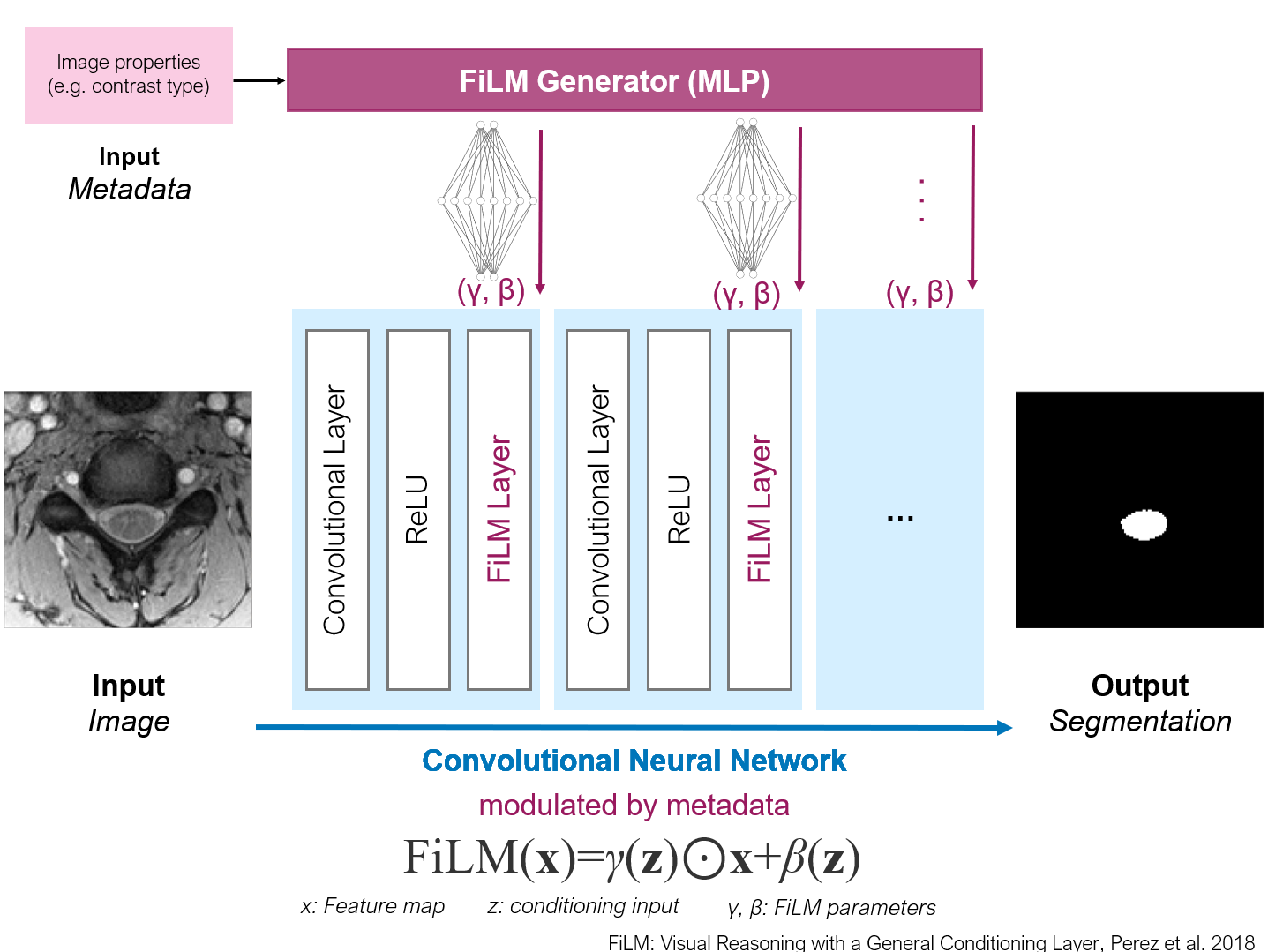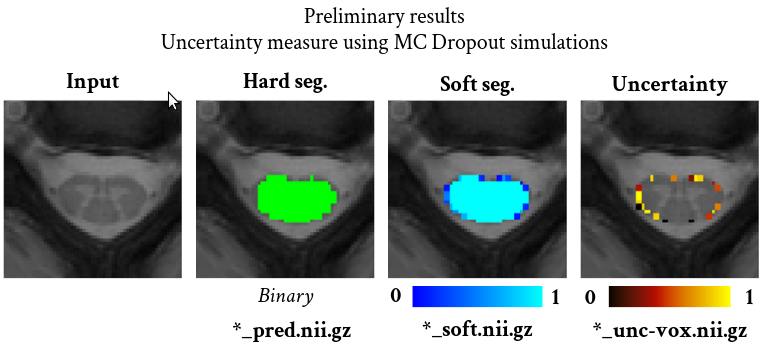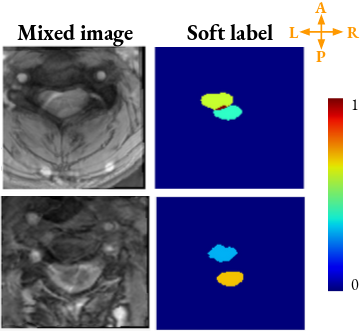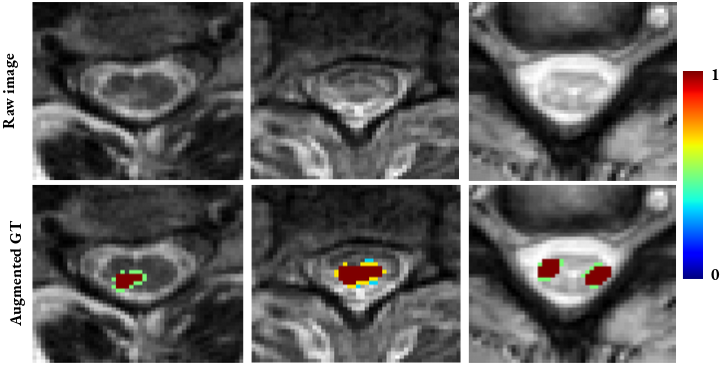Technical features
Physics-informed network
CNNs can be modulated, at each layer, using the Feature-wise Linear Modulation (FiLM) technique. FiLM permits to add priors during training/inference based on the imaging physics (e.g. acquisition parameters), thereby improving the performance of the output segmentations.

Figure FiLM
Uncertainty measures
At inference time, uncertainty can be estimated via two ways: - model-based uncertainty (epistemic) based on Monte Carlo Dropout. - image-based uncertainty (aleatoric) based on test-time augmentation.
From the Monte Carlo samples, different measures of uncertainty can be derived: - voxel-wise entropy - structure-wise intersection over union - structure-wise coefficient of variation - structure-wise averaged voxel-wise uncertainty within the structure
These measures can be used to perform some post-processing based on the uncertainty measures.

Figure Uncertainty
Two-step training scheme with class sampling
Class sampling, coupled with a transfer learning strategy, can mitigate class imbalance issues, while addressing the limitations of classical under-sampling (risk of loss of information) or over-sampling (risk of overfitting) approaches.
During a first training step, the CNN is trained on an equivalent proportion of positive and negative samples, negative samples being under-weighted dynamically at each epoch. During the second step, the CNN is fine-tuned on the realistic (i.e. class-imbalanced) dataset.
Mixup
Mixup is a data augmentation technique, wherein training is performed on samples that are generated by combining two random samples from the training set and from the associated labels. The motivation is to regularize the network while extending the training distribution.

Figure mixup
Data augmentation on lesion labels
This data augmentation is motivated by the large inter-rater variability that is common in medical image segmentation tasks. Typically, raters disagree on the boundaries of pathologies (e.g., tumors, lesions). A soft mask is constructed by morphological dilation of the binary segmentation (i.e. mask provided by expert), where expert-labeled voxels have one as value while the augmented voxels are assigned a soft value which depends on the distance to the core of the lesion. Thus, the prior knowledge about the subjective lesion borders is then leveraged to the network.

Figure Data Augmentation on lesion ground truths
Network architectures
UNet, with control of the network depth.
HeMIS-UNet: integrates the HeMIS strategy to deal with missing modalities within a UNet training scheme.
FiLMed-UNet, based on FiLM strategy adapted to the segmentation task.
Countception: modified implementation of Countception for keypoints detection.
Loss functions
Dice Loss. Also adapted for multi-label segmentation tasks, by averaging the loss for each class.
Focal-Dice Loss: Linear combination of the Focal and Dice losses.
Generalized Dice Loss. An additional feature compared to the published reference, is that the background volume can be weighted by the inverse of its area, which could be of interest in high class imbalance scenarios.
Adaptive wing loss. Loss function used to detect key points with Gaussian representation of the target.
Loss Combination: Linear combination of any other implemented losses.